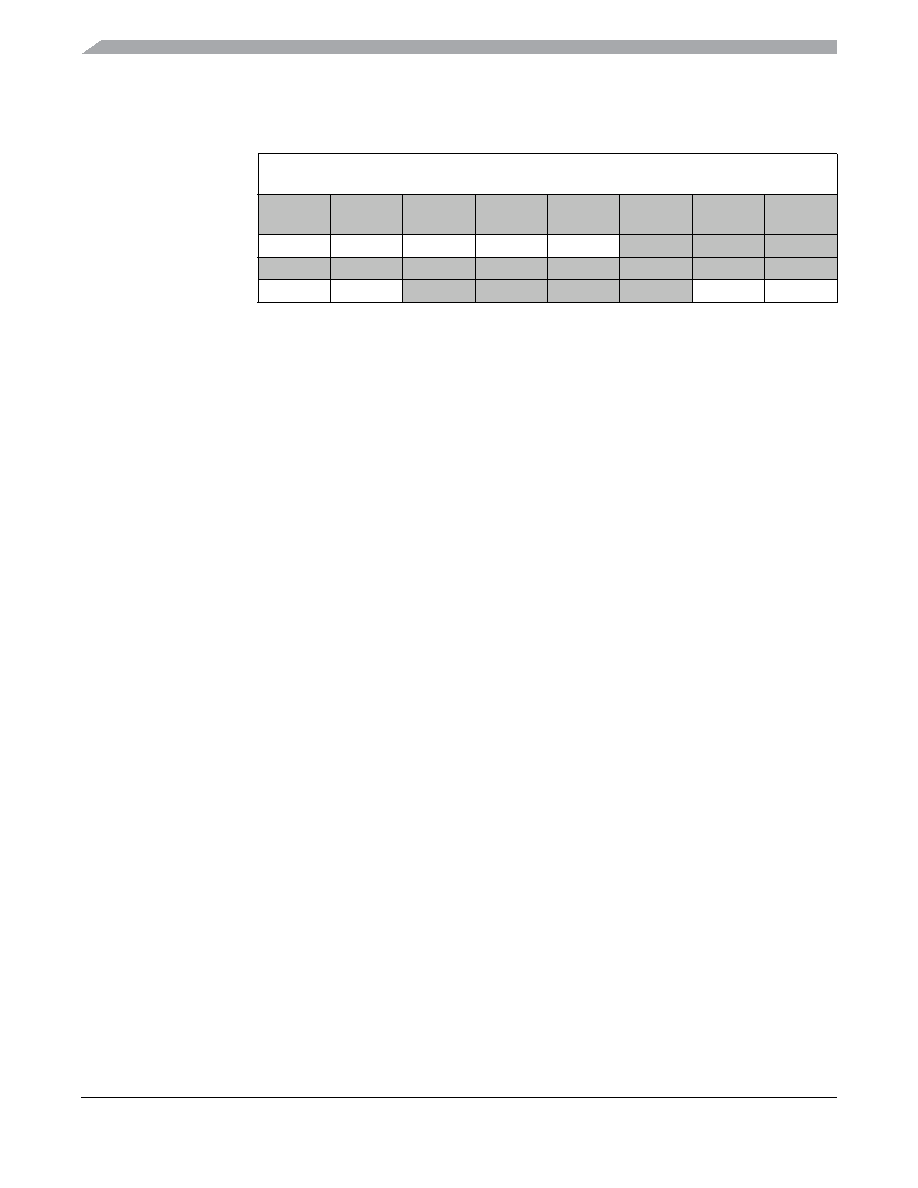- 您現(xiàn)在的位置:買賣IC網(wǎng) > PDF目錄45288 > MC9S08GT60CFDE (FREESCALE SEMICONDUCTOR INC) 8-BIT, FLASH, 20 MHz, MICROCONTROLLER, QCC48 PDF資料下載
參數(shù)資料
| 型號(hào): | MC9S08GT60CFDE |
| 廠商: | FREESCALE SEMICONDUCTOR INC |
| 元件分類: | 微控制器/微處理器 |
| 英文描述: | 8-BIT, FLASH, 20 MHz, MICROCONTROLLER, QCC48 |
| 封裝: | QFN-48 |
| 文件頁數(shù): | 232/290頁 |
| 文件大小: | 1314K |
| 代理商: | MC9S08GT60CFDE |
第1頁第2頁第3頁第4頁第5頁第6頁第7頁第8頁第9頁第10頁第11頁第12頁第13頁第14頁第15頁第16頁第17頁第18頁第19頁第20頁第21頁第22頁第23頁第24頁第25頁第26頁第27頁第28頁第29頁第30頁第31頁第32頁第33頁第34頁第35頁第36頁第37頁第38頁第39頁第40頁第41頁第42頁第43頁第44頁第45頁第46頁第47頁第48頁第49頁第50頁第51頁第52頁第53頁第54頁第55頁第56頁第57頁第58頁第59頁第60頁第61頁第62頁第63頁第64頁第65頁第66頁第67頁第68頁第69頁第70頁第71頁第72頁第73頁第74頁第75頁第76頁第77頁第78頁第79頁第80頁第81頁第82頁第83頁第84頁第85頁第86頁第87頁第88頁第89頁第90頁第91頁第92頁第93頁第94頁第95頁第96頁第97頁第98頁第99頁第100頁第101頁第102頁第103頁第104頁第105頁第106頁第107頁第108頁第109頁第110頁第111頁第112頁第113頁第114頁第115頁第116頁第117頁第118頁第119頁第120頁第121頁第122頁第123頁第124頁第125頁第126頁第127頁第128頁第129頁第130頁第131頁第132頁第133頁第134頁第135頁第136頁第137頁第138頁第139頁第140頁第141頁第142頁第143頁第144頁第145頁第146頁第147頁第148頁第149頁第150頁第151頁第152頁第153頁第154頁第155頁第156頁第157頁第158頁第159頁第160頁第161頁第162頁第163頁第164頁第165頁第166頁第167頁第168頁第169頁第170頁第171頁第172頁第173頁第174頁第175頁第176頁第177頁第178頁第179頁第180頁第181頁第182頁第183頁第184頁第185頁第186頁第187頁第188頁第189頁第190頁第191頁第192頁第193頁第194頁第195頁第196頁第197頁第198頁第199頁第200頁第201頁第202頁第203頁第204頁第205頁第206頁第207頁第208頁第209頁第210頁第211頁第212頁第213頁第214頁第215頁第216頁第217頁第218頁第219頁第220頁第221頁第222頁第223頁第224頁第225頁第226頁第227頁第228頁第229頁第230頁第231頁當(dāng)前第232頁第233頁第234頁第235頁第236頁第237頁第238頁第239頁第240頁第241頁第242頁第243頁第244頁第245頁第246頁第247頁第248頁第249頁第250頁第251頁第252頁第253頁第254頁第255頁第256頁第257頁第258頁第259頁第260頁第261頁第262頁第263頁第264頁第265頁第266頁第267頁第268頁第269頁第270頁第271頁第272頁第273頁第274頁第275頁第276頁第277頁第278頁第279頁第280頁第281頁第282頁第283頁第284頁第285頁第286頁第287頁第288頁第289頁第290頁

Chapter 4 Memory
MC9S08GB/GT Data Sheet, Rev. 2.3
46
Freescale Semiconductor
Provided the key enable (KEYEN) bit is 1, the 8-byte comparison key can be used to temporarily
disengage memory security. This key mechanism can be accessed only through user code running in secure
memory. (A security key cannot be entered directly through background debug commands.) This security
key can be disabled completely by programming the KEYEN bit to 0. If the security key is disabled, the
only way to disengage security is by mass erasing the FLASH if needed (normally through the background
debug interface) and verifying that FLASH is blank. To avoid returning to secure mode after the next reset,
program the security bits (SEC01:SEC00) to the unsecured state (1:0).
4.3
RAM
The MC9S08GB/GT includes static RAM. The locations in RAM below $0100 can be accessed using the
more efcient direct addressing mode, and any single bit in this area can be accessed with the bit
manipulation instructions (BCLR, BSET, BRCLR, and BRSET). Locating the most frequently accessed
program variables in this area of RAM is preferred.
The RAM retains data when the MCU is in low-power wait, stop2, or stop3 mode. At power-on or after
wakeup from stop1, the contents of RAM are uninitialized. RAM data is unaffected by any reset provided
that the supply voltage does not drop below the minimum value for RAM retention.
For compatibility with older M68HC05 MCUs, the HCS08 resets the stack pointer to $00FF. In the
MC9S08GB/GT, it is usually best to re-initialize the stack pointer to the top of the RAM so the direct page
RAM can be used for frequently accessed RAM variables and bit-addressable program variables. Include
the following 2-instruction sequence in your reset initialization routine (where RamLast is equated to the
highest address of the RAM in the Freescale-provided equate le).
LDHX
#RamLast+1
;point one past RAM
TXS
;SP<-(H:X-1)
When security is enabled, the RAM is considered a secure memory resource and is not accessible through
BDM or through code executing from non-secure memory. See Section 4.5, “Security” for a detailed
description of the security feature.
4.4
FLASH
The FLASH memory is intended primarily for program storage. In-circuit programming allows the
operating program to be loaded into the FLASH memory after nal assembly of the application product.
Table 4-4. Nonvolatile Register Summary
Address
Register Name
Bit 7
654321
Bit 0
$FFB0 –
$FFB7
NVBACKKEY
8-Byte Comparison Key
$FFB8 –
$FFBC
Reserved
—
$FFBD
NVPROT
0
$FFBE
Reserved1
1 This location is used to store the factory trim value for the ICG.
—
$FFBF
NVOPT
相關(guān)PDF資料 |
PDF描述 |
|---|---|
| MC9S08GB60CFU | 8-BIT, FLASH, 20 MHz, MICROCONTROLLER, PQFP64 |
| MC9S08GT32CB | 8-BIT, FLASH, 20 MHz, MICROCONTROLLER, PDIP42 |
| MC9S08GT60CFD | 8-BIT, FLASH, 20 MHz, MICROCONTROLLER, QCC48 |
| MC9S08GT16CFBE | 8-BIT, FLASH, 20 MHz, MICROCONTROLLER, PQFP44 |
| MC9S08GT32CFDE | 8-BIT, FLASH, 20 MHz, MICROCONTROLLER, QCC48 |
相關(guān)代理商/技術(shù)參數(shù) |
參數(shù)描述 |
|---|---|
| MC9S08GT60CFDER | 功能描述:8位微控制器 -MCU 8BIT 60K FLASH 4K RAM RoHS:否 制造商:Silicon Labs 核心:8051 處理器系列:C8051F39x 數(shù)據(jù)總線寬度:8 bit 最大時(shí)鐘頻率:50 MHz 程序存儲(chǔ)器大小:16 KB 數(shù)據(jù) RAM 大小:1 KB 片上 ADC:Yes 工作電源電壓:1.8 V to 3.6 V 工作溫度范圍:- 40 C to + 105 C 封裝 / 箱體:QFN-20 安裝風(fēng)格:SMD/SMT |
| MC9S08GT60CFU | 制造商:FREESCALE 制造商全稱:Freescale Semiconductor, Inc 功能描述:Microcontrollers |
| MC9S08GT60CMC | 制造商:FREESCALE 制造商全稱:Freescale Semiconductor, Inc 功能描述:Microcontrollers |
| MC9S08GT8A | 制造商:FREESCALE 制造商全稱:Freescale Semiconductor, Inc 功能描述:Microcontrollers |
| MC9S08GT8AC | 制造商:FREESCALE 制造商全稱:Freescale Semiconductor, Inc 功能描述:Microcontrollers |
發(fā)布緊急采購,3分鐘左右您將得到回復(fù)。